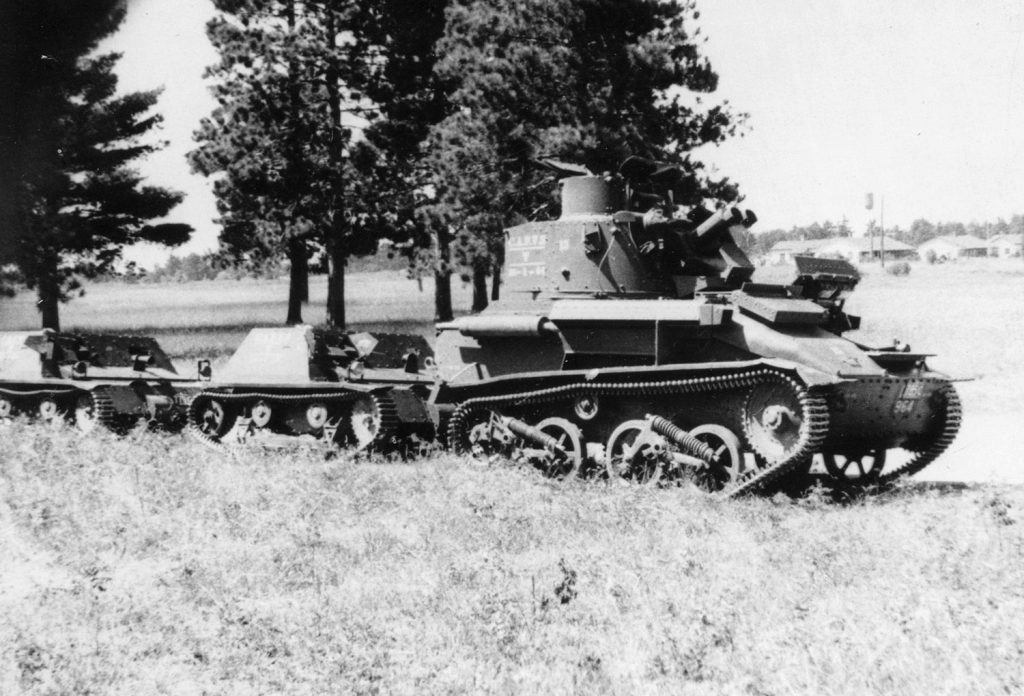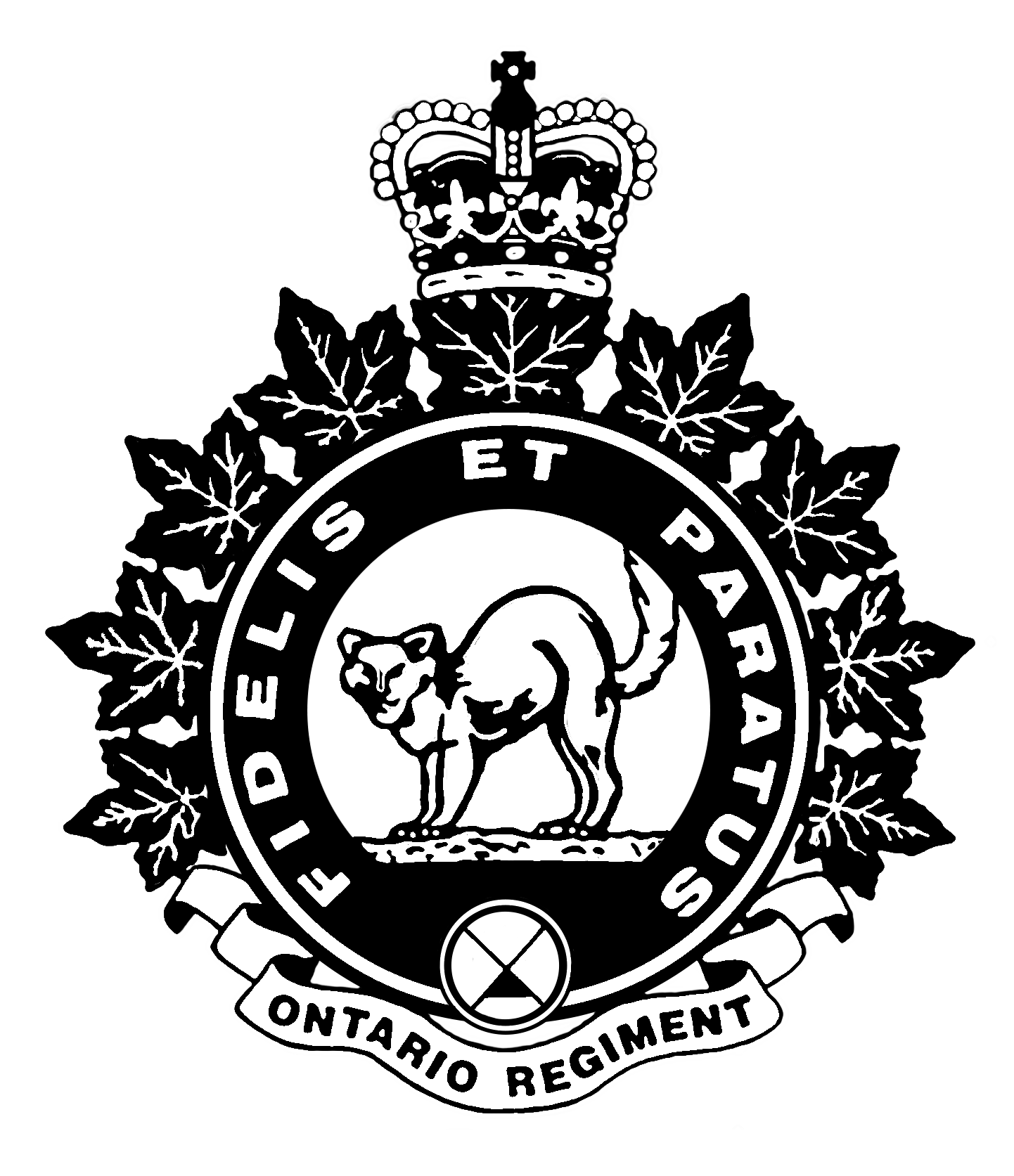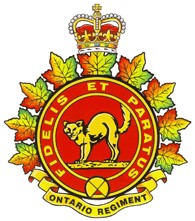August 1939 – Summer Training Camp and Looming War
The 1939 summer training camp was the third such camp since the Ontario Regiment made the conversion to a tank regiment (actually a battalion to be accurate) in late 1936. The 1937 camp, located at Camp Niagara, lacked any armour and the focus was on machine guns, gas protection, and tank theory. Carden-Lloyd armoured carriers were available for the 1938 camp which took place at Camp Borden. The 1939 camp for the Ontarios was the largest camp of the summer at Borden but quite a bit smaller than the previous year.
As in 1938, some members of the Regiment attended tank courses at Camp Borden prior to the 1939 summer training camp. The first group arrived on 10 July and consisted of Lieutenant M. Stroud, Sergeant W. Henderson and Lance Corporal Steve Wotton (later commanding officer of the Ontario Regiment from 1954-58). The second group began a course on 22 July and was comprised of Captain Murray Johnston (commanding officer of the overseas regiment from 1942-43 and of the militia regiment from 1946-48), Captain O.C. Butt and Lieutenant J. Chappell.
The Ontario Regiment sent 153 members to Borden for the 1939 summer camp, which began on Saturday 5 August. The day was dedicated to getting settled into camp where the Ontarios were the only tank battalion present. Units of the Royal Canadian Service Corps from across eastern Canada were brought in for support and to conduct their own training. Lieutenant-Colonel Worthington, commander of the Canadian Armoured Fighting Vehicles School (CAFVS), oversaw all phases of the tank training.
There was an open-air Protestant church service, led by the Ontarios’ own Major Reverend F.C. Jarrett, and two other clergymen on Sunday. There was no other training, as was the custom.
Monday through Wednesday were spent in theory and fundamentals of armoured warfare. There were lectures on gas defence, tactics, workshop procedure and discipline. More emphasis was placed on the Vickers machine gun and internal combustion engines with ten lectures each. The Officer Commanding Militia District #2, Brigadier R.O. Alexander, visited the camp on Tuesday and Wednesday (8-9 Aug) to inspect the troops and observe the training.
The Ontarios spent time training on the RYPA, an acronym for roll, pitch, yaw, alteration of course. The RYPA was an ingenious device for its day. A skeleton of a tank turret was mounted on a motorized platform that could be made to move, simulating the motion of a tank in motion. A pellet gun was used as the main armament. A model landscape was laid out in front of the turret on which miniature tanks moved about, acting as targets. A course in driving was conducted, making use of the Carden-Lloyds. After training on the RYPA, the crews were sent to the range to fire machine guns from the vehicles.
On Thursday the soldiers drove the armoured vehicles for real.

The summer camp finished with the Ontarios employing the CAFVS’s entire fleet of two Vickers Mark IVB light tanks and 12 Carden-Lloyd carriers in a field exercise on the Friday against simulated enemy infantry and anti-tank positions marked by flags. Fourteen more Mark VIBs arrived in late August, again just too late for the Ontarios to train on them. In later years Captain Jack Sherriff (who was a corporal in 1939) recalled the Vickers light tanks: “The crew commander gave his orders to the driver by means of a speaking tube that ran to the driver’s compartment. The Vickers was tough to maintain. Sand got in the bogies and the track split easily.”
The Regiment’s inspection report, prepared by Brigadier Alexander, was mostly positive. The lack of equipment was mentioned several times. It stated that the “men are keen and of a good type” and it spoke highly of the individual officers. The report indicated that the Camp Borden commander recognized the Ontarios “as exceeding all others in general efficiency”.
The newspapers were critical of the scarcity of equipment available to the troops. The Evening Telegram noted the low number of vehicles available. The Globe and Mail stated that the troops were “severely handicapped by lack of equipment” while recognizing that they were “carrying on in the manner expected of a soldier”. Not only vehicles, but other equipment was lacking. The staff at the CAFVS created an imitation anti-tank gun out of a length of pipe and some scrap steel to form a wheeled mount. It fired puffs of smoke to simulate gun fire.
The Ontarios left Camp Borden and returned to Oshawa on Saturday 12 August. The next time the Ontarios would return to Camp Borden it would be under active service conditions. Late August saw the situation in Europe deteriorate and war with Germany seemed inevitable. Preparations for the impending war were being made across Canada. In Ontario County measures were instituted to guard local buildings and infrastructure from possible sabotage. On 28 August all military installations in Ontario County were placed under the command of Lieutenant Colonel E. Pearson, commanding officer of the Ontario Regiment. Guards were posted at the Oshawa Armoury, Whitby Armoury and Regimental facilities at Cannington and Uxbridge. Civilian guards were placed at the pumping station at Lake Ontario, the city water tower and the Bell Telephone building over the next few days.
Rod Henderson
Rod Henderson is the Regimental Historian of the Ontario Regiment. He served as a Sergeant in the Regiment and is the author of “Fidelis Et Paratus: The History of The Ontario Regiment RCAC”.


